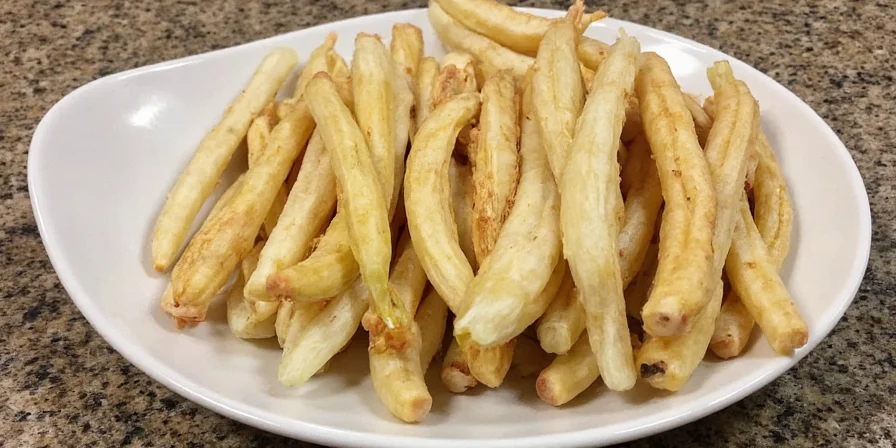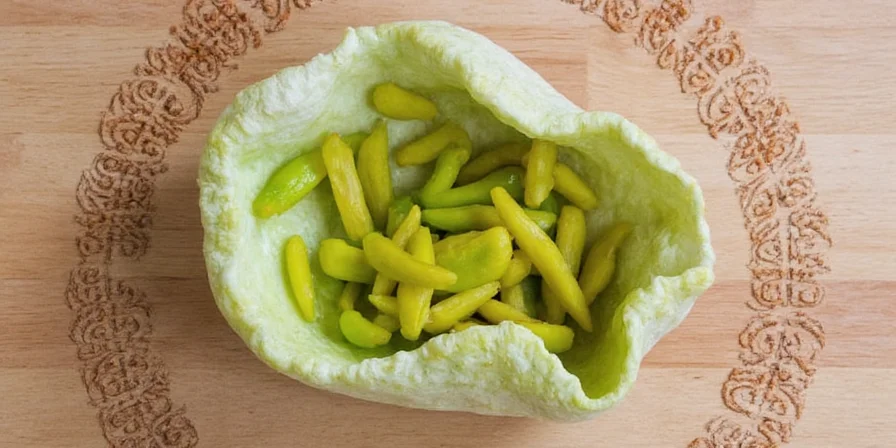Table of Contents
- Introduction: What Exactly is Galangal?
- So… What Does Galangal Taste Like Anyway?
- Galangal vs. Ginger: Spot the Difference
- How to Use Galangal in Your Kitchen
- Storage Tips: Keep It Fresh (Without Smelling Like a Root Cellar)
- Traditional Perspectives on Galangal Properties
- Where to Buy Galangal (and How to Not Be Scared by the Produce Section)
- Recipes to Try with Galangal
- Common Myths About Galangal Busted
- Wrap-Up: Why Galangal Matters in Culinary Culture
- Frequently Asked Questions
Introduction: What Exactly is Galangal?
This guide serves home cooks and culinary explorers seeking authentic Southeast Asian flavors. Before we dive into galangal's profile, understand it's not just one plant—it's a group of aromatic rhizomes from the ginger family (Zingiberaceae). The two main types are:
- Greater galangal (Alpinia galanga) – The bold, dominant variety
- Lesser galangal (Alpinia officinarum) – More delicate and floral

So… What Does Galangal Taste Like Anyway?
Galangal delivers a complex sensory experience distinct from common spices:
- Pungent and Peppery: Resembles black pepper fused with pine resin
- Woody Undertones: Evokes forest freshness after rainfall—earthy and clean
- Citrus Zing: Subtle lemon-lime finish that cuts through richness
- Minimal Sweetness: Unlike ginger, it lacks sugar notes—pure savory intensity
This unique profile makes it indispensable for authentic Thai tom kha gai or Lao laap, where its sharpness balances coconut milk's richness. It’s not a background note but a flavor architect.

Galangal vs. Ginger: Spot the Difference
Though botanical cousins, their culinary roles are non-interchangeable. Key distinctions:
| Feature | Galangal | Ginger |
|---|---|---|
| Flavor Profile | Spicy, woody, peppery, citrusy | Sweet-spicy, warm, earthy |
| Texture | Fibrous, tough skin | Soft, moist flesh |
| Culinary Function | Structural flavor backbone in broths | Sweetness carrier in baked goods |
| Substitution Risk | Renders dishes unauthentic | Alters fundamental flavor balance |

How to Use Galangal in Your Kitchen
Maximize its potential with these technique-focused tips:
- Never Use Raw: Fibrous texture becomes bitter; always cook to mellow sharpness
- Crush for Maximum Infusion: Smash slices before adding to soups for optimal oil release
- Timing is Crucial: Add at cooking start—needs 20+ minutes to integrate flavors
- Dried Powder Ratio: Use 1/3 teaspoon powder per tablespoon fresh (it concentrates)
- Discard After Cooking: Remove slices before serving like bay leaves—they’ve done their work

Storage Tips: Keep It Fresh (Without Smelling Like a Root Cellar)
Preserve potency with these science-backed methods:
- Refrigeration: Wrap in paper towel inside airtight container (lasts 4 weeks)
- Freezing: Slice, flash-freeze, then vacuum-seal (retains flavor 6 months)
- Drying: Dehydrate at 120°F for 8 hours for shelf-stable powder
- Pickling: Preserve in rice vinegar with lime zest for salad applications

Traditional Perspectives on Galangal Properties
Culinary traditions attribute functional roles to galangal, though modern science requires context:
- Digestive Aid: Southeast Asian cuisine uses it post-meal for comfort
- Antimicrobial Role: Historically preserved dishes in tropical climates
- Flavor Catalyst: Enhances absorption of fat-soluble compounds in dishes
These applications stem from generations of kitchen experience, not medical claims. Its true value lies in transforming dishes through flavor chemistry.
Where to Buy Galangal (and How to Not Be Scared by the Produce Section)
Source authentic material with these targeted strategies:
- Thai/Vietnamese Markets: Seek firm, smooth-skinned roots with pine-like aroma
- Frozen Sections: Check Asian grocery freezer aisles for pre-sliced portions
- Online Specialty Retailers: Order vacuum-sealed fresh roots (ships overnight)
Pro Tip: Avoid shriveled specimens—vibrant pink root tips indicate peak freshness. Fresh galangal should smell like a pine forest, not musty earth.

Recipes to Try with Galangal
Elevate authenticity with these precision applications:
- Tom Kha Gai: 3 thin slices per serving—crucial for broth clarity
- Laap Moo: Minced galangal balances minced pork's richness
- Massaman Curry Paste: Toasted powder adds depth without bitterness
- Galangal-Lemongrass Broth: Simmer 20 minutes for clear consommé base
- Grilled Fish Marinade: Crushed with kaffir lime leaves for aromatic crust
Common Myths About Galangal Busted
Debunking misconceptions with culinary evidence:
- Myth: Interchangeable with ginger — Substituting alters chemical balance; dishes lose authenticity
- Myth: Lemon zest mimics its profile — Citrus notes are just one dimension; misses woody backbone
- Myth: Dried equals fresh — Dehydration concentrates camphor notes; use sparingly
- Myth: Shelf-stable indefinitely — Degrades in 3 months; loses volatile compounds
Wrap-Up: Why Galangal Matters in Culinary Culture
Galangal isn't merely a spice—it's a cultural fingerprint. Its chemical complexity (containing 1,8-cineole and alpha-pinene) creates signature profiles that define regional identities across Thailand and Laos. Unlike ginger's global ubiquity, galangal's limited cultivation zones make it a marker of authenticity. When properly used, it performs a unique function: cutting through fat while adding aromatic depth without sweetness. This makes it indispensable for achieving true Southeast Asian flavor architecture—a testament to how terroir shapes culinary identity.

Frequently Asked Questions About Galangal
What does galangal taste like compared to ginger?
Galangal delivers sharp peppery notes with pine-like woodiness and citrus finish, while ginger offers sweet warmth. They share botanical roots but create fundamentally different flavor structures—galangal cuts richness, ginger adds sweetness.
Can I substitute galangal in Thai recipes?
No—substitutions compromise authenticity. Galangal's unique compounds (like galangol) are irreplaceable in traditional broths. If unavailable, choose a different recipe; ginger creates fundamentally different chemistry.
How do I prepare fresh galangal for cooking?
Peel with spoon, slice thinly, then crush with mortar. Always cook 20+ minutes in liquid—raw galangal is fibrous and bitter. Discard slices after cooking as they've released all flavor compounds.
Does galangal have culinary advantages over ginger?
Yes—it provides structural acidity that balances rich coconut milk without vinegar, and its antimicrobial properties historically preserved dishes in tropical climates. Ginger cannot replicate this functional role.
Summary
Galangal offers a spicy, woody, peppery profile with citrus undertones—distinct from ginger's sweetness. This rhizome's chemical complexity makes it essential for authentic Southeast Asian cuisine. By understanding its preparation, storage, and irreplaceable role, home cooks can unlock genuine flavors that transform dishes from ordinary to culturally resonant. Its true value lies not in health claims but in culinary functionality: cutting richness while adding multidimensional depth.











 浙公网安备
33010002000092号
浙公网安备
33010002000092号 浙B2-20120091-4
浙B2-20120091-4